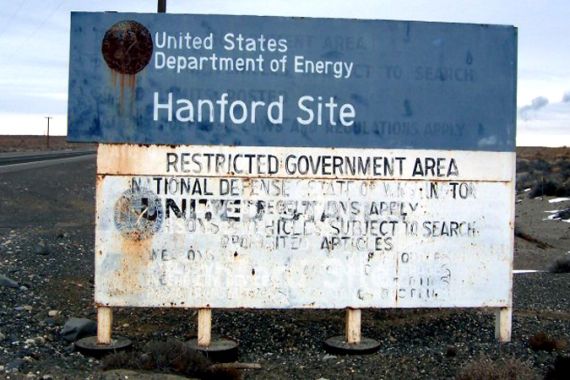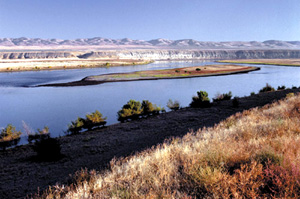Washington nuclear waste tanks ‘leaking’
Leaks found in six underground storage tanks at Hanford nuclear reservation in US state “disturbing”, officials say.

Six underground storage tanks at the Hanford Nuclear Reservation along the Columbia River in the US state of Washington have been found to be leaking radioactive waste, but there is no immediate risk to human health, state and federal officials said.
“There is no immediate or near-term health risk associated with these newly discovered leaks, which are more than five miles (8km) from the Columbia River,” Governor Jay Inslee said in a statement released by his office on Saturday.
Keep reading
list of 4 itemsTurtles swimming to extinction in Malaysia as male hatchlings feel heat
Could shipping containers be the answer to Ghana’s housing crisis?
Thousands protest against over-tourism in Spain’s Canary Islands
“But nonetheless this is disturbing news for all Washingtonians,” he added.
The seeping waste adds to decades of soil contamination caused by leaking storage tanks at Hanford in the past and threatens to further taint groundwater below the site but poses no near-term danger of polluting the Columbia River, officials said.
“This certainly raises serious questions about the integrity of all 149 single-shell tanks with radioactive liquid and sludge at Hanford,” Inslee said.
‘Aging tanks’
The newly discovered leaks were revealed by Inslee a week after the US energy department disclosed that radioactive waste was found to be escaping from one tank at Hanford.
 |
| An area of Columbia River, known as Hanford Reach, near nuclear reservation [DOE handout photo] |
Inslee said he was informed on Friday by outgoing US Energy Secretary Steven Chu that a total of six of the aging, single-walled tanks were leaking radioactive waste.
Suzanne Dahl, the tank waste treatment manager for the state Department of Ecology, said “it points to the age of the tanks and how there’s going to be an increased probability of this happening in the future.”
“When waste is in the tanks, it’s manageable. Once it’s out of the tanks and in the soil, it’s much harder to manage it, remove it and down the road you’re adding to contamination in the groundwater that already exists.”
The energy department said a week ago that declining liquid levels in one tank at Hanford showed it was leaking at a rate of 150 to 300 gallons (568 to 1,146 litres) per year.
The department of energy said last week that monitoring wells have identified no significant changes in concentrations of chemicals or radionuclides in the soil.
Hanford and WWII
The 586-square-mile (1,518-square-km) Hanford Nuclear Reservation was established near the small farming towns of Hanford and White Bluffs in 1943 as part of the Manhattan Project – the US government programme that developed the first atomic bombs.
The nearly 1,500 inhabitants of the two towns as well as Native Americans living in the area were relocated under the government’s “eminent domain” authority.
Over 50,000 employees were brought to live and work at the site in the race to develop the weapon. A worker employeed at Hanford during WWII told Al Jazeera that most employees were unaware that the goal of the project was an atomic bomb. It was kept secret for security reasons.
“They told us when it was over… what could we say? For us, at the time, it was just a good job.”
Administrators and engineers working on the site established a government town nearby named Richland – which eventually grew into the Tri-Cities of Richland, Pasco and Kennewick.
Production of plutonium materials at the site continued through the Cold War and ended there in 1989 as work shifted to cleanup of nuclear and chemical waste at Hanford, considered one of the largest and most complex such projects in the country.
According to the US Environmental Protection Agency, approximately 475 billion gallons of contaminated water have been discharged into the soil.
Under the multibillion-dollar cleanup plan, the waste from the storage tanks will eventually be processed in a special treatment plant that, in a process called “vitrification”, will immobilise the waste in a glass-like material that can be safely disposed of underground in stainless steal canisters.
But Dahl said construction of the waste treatment plant was still years away.